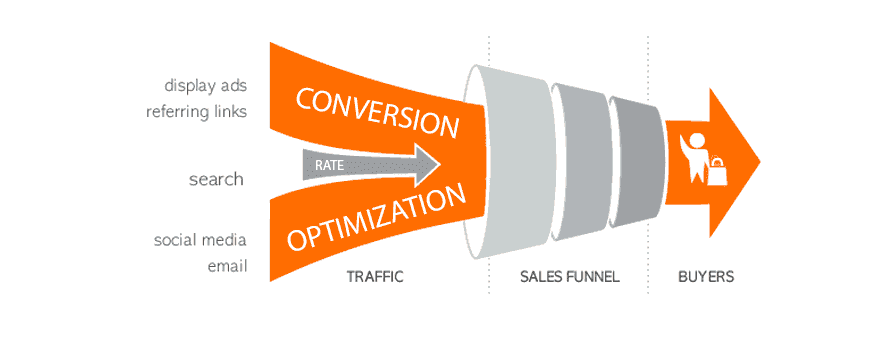What is a Conversion Rate?
A conversion rate for a website or specific webpage is the number of conversions the page has generated divided by the number of visitors. For example, if an e-commerce site has 400 visitors in a month and 150 sales, the conversion rate would 150 divided by 400, or 38%.
A conversion rate can mean anything you want your user to do when they visit your website. In our example it was sales, but it may be clicks, signups, making a purchase, video views, or the like. Websites and apps have plenty of different conversion goals and each will garner their own conversion rates.

Why is Your Conversion Rate Important?
When growing a brand and a business, tracking conversion rates is important because it allows you to measure the performance of your webpages and mobile apps. When you know what percentage of your users are completing the specific goals you’ve set to drive your business, you can then determine the success of your site or app as well as identify areas that may need improvement.
Improving your conversion rate is important too. It allows you to get more sales with the traffic and site visitors you already have. For example, if you’re spending $1,500 a month on advertising in an attempt to bring 500 visitors to your site, if you double the conversion rate you actually also double the value of your ad spend.
This way, you can actually cut down on your ad spend while getting the same benefits you had before. You can then invest this revenue in new ad campaigns or other resources to further boost your conversion rates.

What is a Good Conversion Rate and How is it Calculated?
The equation to figure out your conversion rate is really easy. To get accurate results, you simply have to divide the number of conversions you get in your choice of time frame (days, weeks, or months) by the total number of visitors your website, page, or app received, and multiply it all by 100%.

For example, if you had 15,342 site visitors and 1,545 conversions in the last 30 days, your conversion rate equation would look like the following: 1,545/15,342 X 100, and your rate would be 10.1%. Pretty simple, right?
To make things even simpler, many online advertising and analytics platforms like Google Analytics, AdWords, and even Facebook Ads automatically calculate and track conversion rates and can return the data to you in a matter of minutes.
As for what determines a “good” conversion rate – it all depends on the goals you’ve set for your company. A good conversion rate is one that reflects that your goals are being met with the traffic you already have.
Perhaps you want to see more purchases, clicks, views, signups, registrations, or other actions from your regular site visitors. Conversion rates will show you data that reflects how well your goals are being met, whether they aren’t quite being met, and everything in between.
This information is valuable for many reasons and over time, and with continued marketing practices, your conversion goals may grow and change to accommodate how your company is growing and changing.

What Is the Difference Between a Conversion Rate and Conversion Rate Optimization?
Your conversion rate is the percentage of conversions a piece of content makes, while conversion rate optimization is what you do with that number. You can optimize your website, webpages, and apps to capitalize on the traffic you already have.
You can do this by conducting some marketing research through practices like split testing, multivariate testing, and more. When optimizing webpages and apps, your content can perform better than the original content did, improving conversion rates and revealing an easy-to-measure impact on your business and brand.
Conversion Rate Tracking
Your conversion rate is always going to be a great tool for tracking the performance of your business and brand content. Of course, there’s more to the tool than just knowing some percentages.
In addition to learning what your conversion rate is for a certain webpage or your website, you also need to be tracking conversions. Conversion rates can be tracked using certain online tools and platforms, so be sure to take advantage of this when and where you can.
Conversion tracking can help you see how conversions rates have changed over a certain window of time, giving you clear ideas about how to improve and where to improve, as well as insight into what changes have worked and which have not.
Boost your Conversion Rate with Directive
Your website is a big part of your presence and your success. You deserve the best possible website for the best possible results, and Directive can help you there!
Boosting your conversion rate is a great way to strengthen your website, but there’s more you can do and Directive can help. Get a free proposal from us today to go over how our conversion rate optimization services can boost your lead and business growth.